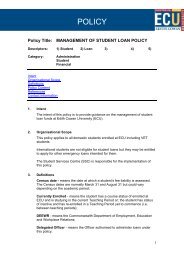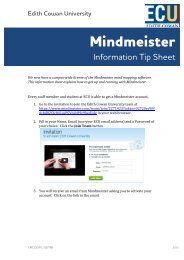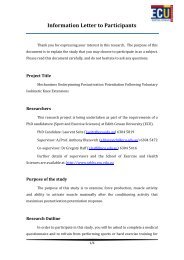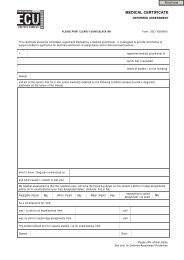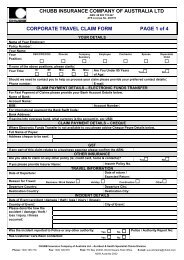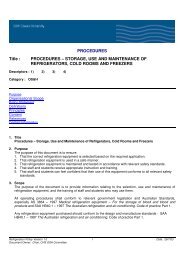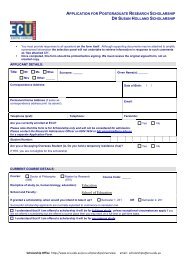Benchmarking: A Literature Review - ECU | Sign In : Portals - Edith ...
Benchmarking: A Literature Review - ECU | Sign In : Portals - Edith ...
Benchmarking: A Literature Review - ECU | Sign In : Portals - Edith ...
Create successful ePaper yourself
Turn your PDF publications into a flip-book with our unique Google optimized e-Paper software.
Table 1: Success Factors for Higher Education <strong>Benchmarking</strong>(Booth, et al., 2011)1. Determine which areas to benchmarki. Is this area aligned to strategic goals in priority areas?ii. Will a major project in this area deliver significant benefits relative to the costs?iii. Are there drivers in this area which will sustain energy for the process, and ensure thatbenchmarking is given priority?iv. Is benchmarking in this area supported at the executive level and on the ground?v. Are there adequate human, financial and other resources to support benchmarking in this area?YESContinueNORethink2. Identify benchmarking partnersi. If possible, is there a history of sharing practice and/or an established relationship to build upon?ii. Do the partners have compatible institutional missions, values and goals?iii. Is there a comparable commitment to benchmarking in this area from senior and other relevantmanagers of the partner institutions?iv. Is there a high level of trust between senior and other relevant managers of the partnerinstitutions?v. Is there a shared understanding of explicit benchmarking goals?vi. Are all partners willing to share information and discuss successes and failures?vii. Are the partners similar enough to offer transferable strategies in this area?YESContinueNORethink3. Determine types and level of benchmarkingi. Is there broad agreement on the types of benchmarking, e.g. data-sharing, strategy-sharing,evidence-based self-review?ii. Is there broad agreement on the level of benchmarking (e.g. policy level, discipline level, courselevel, unit level)?iii. Is there agreement on the model that should be the basis for benchmarking? If no existing modelcan be used or adapted, are there sufficient resources to develop and test a suitable new model?iv. Is there agreement on what is and what is not to be in scope?v. Is the scope realistic and achievable by the participants within the anticipated timeframe?YESDevelop and sign MOU and continueNORethink4. Prepare benchmarking documents and templates including the purpose, scope of project, performanceindicators, performance measures and performance datai. Have the indicators and measures been clearly documented and thoroughly reviewed by eachuniversity for alignment to local structures, processes and terminology?ii.iii.YESContinueAre the indicators and measures aligned to accepted standards and good practice across the sector?Have participants who will be carrying out the benchmarking, e.g. Faculty and/or professionalleaders, had the opportunity to provide feedback to ensure clarity and fit?NOFurther development needed10<strong>Benchmarking</strong>: A <strong>Literature</strong> <strong>Review</strong>



